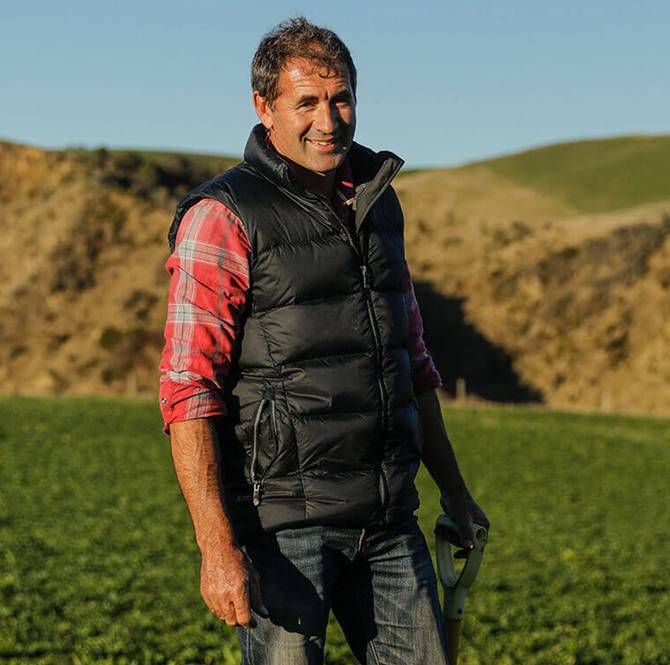July 05, 2021 | Helly Hansen
Since 2019, Helly Hansen has been a partner of ZQ to ensure that all our wool is sourced from growers that adhere to best farm management practices.
ZQ is a third party audited standard that requires growers to thoroughly understand key animal health, environmental and social issues and adhere to a range of best farm management practices. Now, the animal welfare certification is expanding into an even more ambitious environmental goal: regenerative farming with the introduction of ZQRX.
Regenerative Agriculture has the potential to be part of a solution to the world's most pressing environmental and societal challenges, focusing on improving soil health, creating more resilient farming systems and increase biodiversity to work with, not against, nature.We have partnered with The New Zealand Merino Company to be a part of their ZQRX platform. Learn about ZQRX and some of the farmers making regenerative wool a possibility for Helly Hansen.
Currently, all of Helly Hansen’s Merino wool in our base layer collection is ZQ certified and 27% of our line is ZQRX certified. ZQ hopes to have 100% of their Growers baselined to ZQRX by 2025 and our ambition is to take this journey alongside them towards a future where we give more than we take.
WHAT IS ZQ?
ZQ is a wool certification standard that requires growers to provide these five basic freedom requirements to sheep: Freedom from thirst or hunger. Freedom from pain or distress. Freedom from injury or disease. Freedom from discomfort or inadequate shelter. Freedom to display normal patterns of behaviour.
Mulesing (a surgical procedure that removes a section of skin from the sheep to reduce the risk of attack by flies) is not permitted on properties that supply ZQ Natural Fibre. ZQ certification also prohibits the live bulk international export of sheep for slaughter or breeding. In addition, the very nature of the ZQ mission is continuous improvement, and that leads us to ZQRX.

WHAT IS ZQRX?
ZQRX goes beyond sustainability and focuses on meaningful actions that will contribute to improvements across the whole farm system. The Regenerative Index holistically examines the qualities of ZQ-certified properties, highlighting and measuring practices that go above and beyond the ZQ system.
Regenerative Agriculture has the potential to be part of a solution to the world's most pressing environmental and societal challenges, focusing on improving soil health, creating more resilient farming systems and increasing biodiversity to work with, not against, nature. For NZM, Regenerative Agriculture is much more than a set of farming practices, it is a change in mindset that questions the status quo and strives for continual improvement.
ZQRX is a collaborative action platform, it challenges brands and growers to give more than they take. As Helly Hansen works with ZQRX Growers, it helps to incentivise and drive the change we want to see on the ground. Together we can work towards the mutual goal of leaving this planet better than we found it.
GET TO KNOW THE ZQRX FARMERS

MT NICHOLAS STATION, QUEENSTOWN NEW ZEALAND

BARBARA GLENBOURNE, CANTERBURY NEW ZEALAND
MT NICHOLAS STATION, QUEENSTOWN NEW ZEALAND
Mt Nicholas Station is a 40,000 hectare (100,000 acre), high-country merino station on the shores of Lake Wakatipu near Queenstown.The property is owned and run by Kate and Jack Cocks, who believe in working with nature and farming with a light touch.
On Mt Nicholas, they don’t measure sheep per acre, they measure acres per sheep.Stock spend summers in the high alpine. In autumn, a 10-day musterby horseback and foot brings the sheep down from the snowline to pastures which have had months to recover. Mt Nicholas runs on hydroelectricity produced from the overflow of their own protected wetlands. The Cocks monitor water quality with regular testing and aim to have all their streams and rivers at “drinkable” standards.
BARBARA GLENBOURNE, CANTERBURY NEW ZEALAND
Grant calls himself a farmer as well as an environmentalist - he has been using regenerative techniques like direct drilling pasture for more than a decade.When a major faultline ruptured through the property in 2016, an insurance shortfall left Barbaras looking for ways to reduce costs.
They removed commercial fertiliser and and ramped up their efforts in soil health. Grant now claims to be primarily farming the soil - with every-thing else a by-product of what’s happening under the ground.He’s seen year-on-year improvements in topsoil quality and depth and this has, in turn, brought improvements to pasture and animal health.


